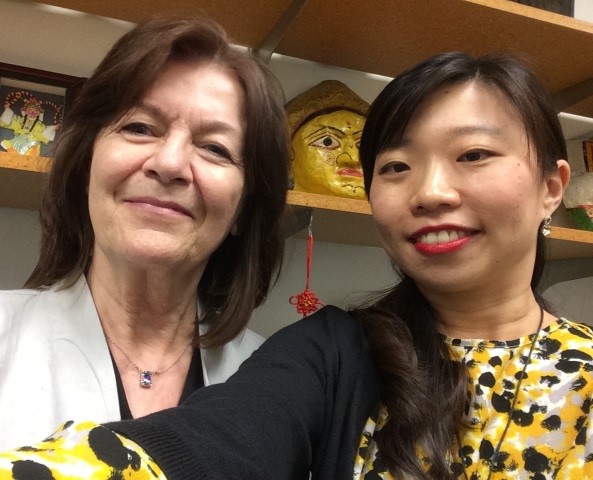As digital media use has exploded in Western nations, transforming communications, news sharing and business practices, it has done the same across Asia — but a pair of ASU researchers say there’s a knowledge gap in the U.S. about how that growth has looked in the East.
To bridge the void, Juliane SchoberSchober is a professor in the School of Historical, Philosophical and Religious Studies and director of the Center for Asian Research. and Pauline CheongCheong is an associate professor in the Hugh Downs School of Human Communication and chair of the Center for Asian Research’s Southeast Asia Council. have helped lead the development of a suite of courses, faculty workshops and research opportunities that they say will help students interact with people from a vast and complex region that includes half of the world’s population and economic production.
“What I really like about this project is that it uses digital media tools to address a digital media need,” Cheong said. “So we’re using this open-source, collaborative platform to bridge the knowledge gap about this growing, dynamic part of the world.”
Schober and Cheong have received a U.S. Department of Education UISFLUndergraduate International Studies and Foreign Language Program grant to fund “Asia Mediated: Interdisciplinary research and teaching innovation.” Pulling together about 20 faculty collaborators at the Center for Asian Research, the project will focus on the political, cultural and social shifts and how they relate to digital media across Asia.
Although digital media plays a huge role in Western and Eastern societies, there are big differences in both types of applications and the ways in which they’re used, Schober and Cheong said.
In the West, they said, people take lots of “selfies.” In the East, people take more “wefies” (a selfie with two or more people). Here, people use Facebook. There, it’s Weibo.
The similarities and differences in the applications for and use of digital media — any information shared online, including news sites, blogs and social media — are important to understand because “their design and use may reflect key cultural values and distinct communication processes, which in turn enact cultural identities, community and notions of authority, leadership and influence,” Cheong said.
ASU professors Juliane Schober and Pauline Cheong snap a wefie.
The project’s application goes beyond communications. Cheong said it’s likely — given Asia’s size and importance — that students from any major will need the skills necessary to engage with that part of the world.
“I teach a class on intercultural communication, and there are several engineering students in it,” Cheong said, as an example. “They take my class because they need to know how they can better engage with cross-cultural teams.”
For Cheong, the time of the project is fitting as ASU diversifies its student population and as more international students come from Asia.
“Asia is a critical hub of online activity, and this has implications for understanding new communication practices that support changes in identity, community and authority practices in Asia and beyond,” she said.
The ubiquity of digital media elevates the project’s importance.
“Digital media has become a part of literacy,” Schober said. “It’s a part of technology that we need to know how to use when we communicate with people from other parts of the world.”
Courses offered through the “Asia Mediated” project are available to all majors and will be searchable in an online, open-source platform that will be collaboratively authored and tagged to enable cross-referencing across key topics for interdisciplinary research and learning. The open-source platform also makes the course curriculum available online for anyone to use, from high school teachers to armchair researchers.
“It’s a very dynamic platform that allows you to find linkages [between subjects] that you can then tailor to your own needs,” said Cheong, who is working on developing a gateway course for the new curriculum.
In addition, “Asia Mediated” will support the creation of a hybrid curriculum for the first two years of Vietnamese language instruction, as well as the creation of an internship program for ASU’s Barrett, the Honors College students to train in research skills about Asian digital media literacies.
More Science and technology

Applying AI to microelectronics manufacturing
Rivers flow across the planet’s surface, carving deep valleys and intricate canyons. Likewise, makers of microelectronics direct plasma, an ionized gas, to travel over silicon wafers, etching…

Applied Materials invests in ASU to advance technology for a brighter future
For nearly 60 years, global giant Applied Materials has been hard at work engineering technology that continues to change how microchips are made.Their products power everything from flat-panel…

Meet ASU engineering students who are improving health care, computing and more
Furthering knowledge of water resource management, increasing the efficiency of manufacturing point-of-care health diagnostic tools and exploring new uses for emerging computer memory are just some…



